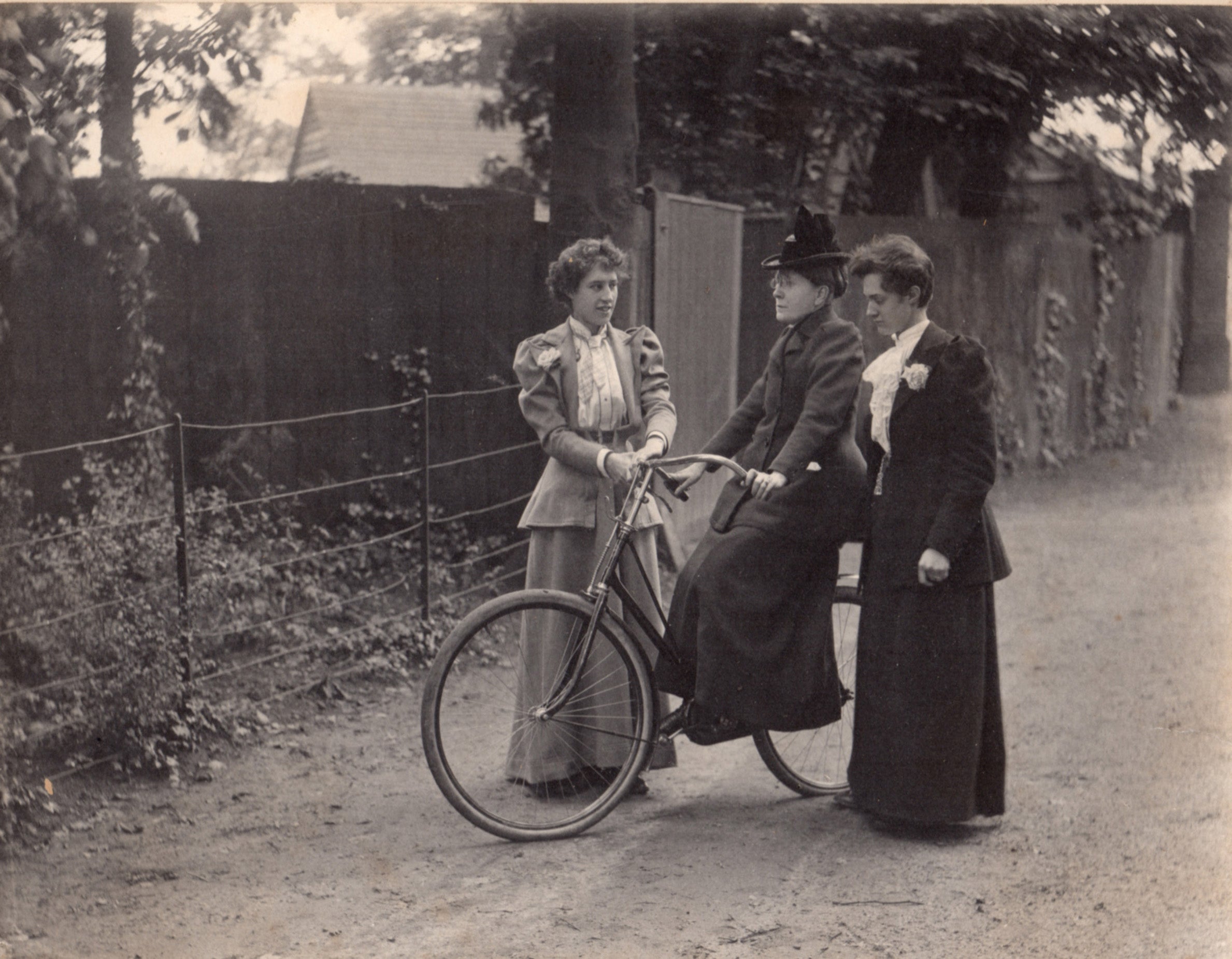How Women on Bikes Changed the World

The great outdoors belongs to everybody, and when it comes to exploring it, an ebike is the most accessible option. In fact, accessibility is built right into Rad Power Bikes' mission statement!
Throughout the month of March, we’ll be highlighting the ways in which nature and ebikes go hand-in-hand -- from the mental health benefits of fresh air to the physical wins earned by going farther and the products that can keep you on the road longer. It's also Women's History Month, and we'll be showcasing the women riders who are using our ebikes to get outside like never before.
If you’ve ever ridden an electric bike, you know how freeing that experience can feel. When you’re in the saddle and have a fully charged battery, there’s a sense that you can do just about anything.
While ebikes are relatively new to the transportation scene, women riders in the late 19th century detected that same sense of freedom when it came to the traditional bikes of the era. Whether for practical transportation or joyous recreation, the bicycle helped women become more independent. As a result, cycling was linked to the women’s rights movement from the beginning.
To celebrate women’s history month, we wanted to take a deeper dive into what that looked like.
"Free, Untrammeled Womanhood"
Suffragist icon Susan B. Anthony never rode a bicycle but saw their ability to break through the gender norms of the 1890s —back when the idea of a woman getting around on her own was taboo.
“Let me tell you what I think of cycling,” Anthony said in an 1896 interview with famed journalist Nellie Bly. “I think it has done more to emancipate women more than anything else in the world.”
As more women turned to bikes, Anthony said, their independence grew. Cycling came to symbolize the “New Woman” -- women who were younger, college-educated, physically active, and interested in pursuing a career outside the home.
“I stand and rejoice every time I see a woman ride by on a wheel. It gives woman a feeling of freedom and self-reliance. It makes her feel as if she were independent. The moment she takes her seat she knows she can’t get into harm unless she gets off her bicycle, and away she goes, the picture of free, untrammeled womanhood.”
Dressed for Change

Beyond championing freedom of movement, women cyclists helped transform the way we dress.
Dress reform -- the effort to free women from the fashions such as corsets laced so tightly they damaged the wearer’s internal organs, skirts so long that they dragged in the muddy, unpaved streets, and dresses so heavy that they weighed up to 15 pounds -- was a key focus of women’s rights campaigners in the mid 19th century.
In the early 1850s Elizabeth Smith Miller, tired of feeling “shackled” by the long, voluminous skirts worn by most women of the day, designed a “rational dress” outfit consisting of loose “Turkish” trousers gathered at the ankle underneath a shirt reaching four inches below the knee.
Miller introduced the outfit to her fellow women’s rights activists Elizabeth Cady Stanton and friend Amelia Bloomer, both of whom also adopted the look. Bloomer, the founder and editor of the first newspaper for and by women, The Lily, espoused the costume frequently -- that’s why her name will always be associated with “bloomers."
As women took up cycling en masse in the late 1880s, this less restrictive clothing took on new life.
Many of these cycling pioneers adopted an updated version of the old “bloomer” outfit which allowed for more freedom of movement -- and less risk of their clothes becoming caught up in the chain or wheels.
"If women ride the bicycle or climb mountains, they should don a costume which will permit them the use of their legs,” Anthony has been quoted as saying. "My one word about the 'bloomers' or any other sort of dress, is that every woman, like every man, should be permitted to wear exactly what she chooses."
Rolling Past the Critics

Whenever women make advancements or take even a small step to shake-up the status quo, there are always naysayers waiting to pounce.
As more women took the wheel, their new clothes were hotly debated on both sides of the Atlantic. An article in The Sun from 1896 highlighted the competing and contradictory opinions on whether bloomers were freeing or immodest.
“It is very funny," Anthony said, when asked about the controversy. "That it is ever and always the men who are troubled about the propriety of the women's costume."
Women cyclists were further ridiculed by a society that found them dangerous and threatening. Cartoonists went so far as to caricature the women as “mannish” and “spinsterly.”
You would think these critics would have more important things to worry about, right? Haters, as history tells us, are going to hate.
Cycling and Suffrage

Suffragists on both sides of the Atlantic used their bikes to travel independently to meetings and marches, hold endurance rides to raise awareness and funds, and of course, just ride to have fun. Suffragist Frances Willard, for instance, actually learned to ride a bike at the age of 53.
The fact that bikes appealed to so many prominent women of the era is a testimony to their transformative power. And although neither of them ever rode a bicycle themselves, both Elizabeth Cady Stanton and Susan B. Anthony have been credited with saying “woman is riding to suffrage on the bicycle.”
In 1920, when the 19th Amendment was ratified after years of struggle, she finally did.
The question today is: where can riding lead us next?
(Cover Photo: The Smithsonian’s National Museum of American History.)







